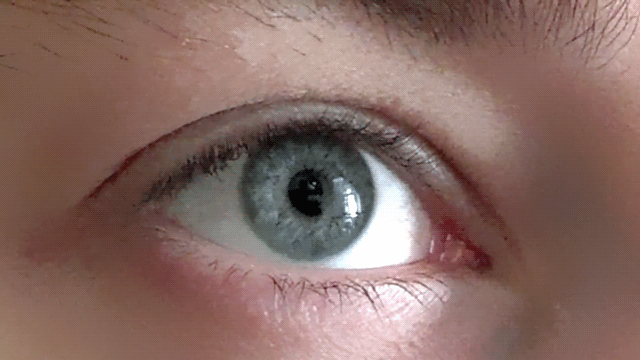Our pupils adjust as we imagine bright and dark scenes

|
Conjuring up a visual image in the mind - like a sunny day or a night sky - has a corresponding effect on the size of our pupils, as if we were actually seeing the image, according to new research.
These findings, published in Psychological Science, a journal of the Association for Psychological Science, suggest that the size of our pupils is not simply a mechanistic response, but one that also adjusts to a subjective sense of brightness.
“Visual imagery is a private and subjective experience which is not accompanied by strongly felt or visible physiological changes,” explains psychological scientist and lead researcher Bruno Laeng of the University of Oslo. “It is a particularly difficult topic to research, as years of controversy about the nature of mental imagery testifies.”
Along with co-author Unni Sulutvedt, also from the University of Oslo, Laeng conducted a series of experiments to see whether they could tap into subjective mental imagery by monitoring pupillary size with an eye-tracking device.
Initially, participants were asked to look at a screen while triangles of different levels of brightness appeared. When they were later asked to actively imagine those triangles, the participants’ pupils varied in size according to the triangle’s original brightness. When imagining brighter triangles, their pupils were smaller. But when imagining darker triangles, their pupils were larger.
In a series of additional experiments, the researchers found that participants’ pupils also changed in diameter when imagining a sunny sky, a dark room, or a face in the sun compared with a face in the shade, as if in preparation for experiencing the various scenes.
The experiments further showed that these results aren’t due to voluntary changes in pupil size or differences in the mental effort required to imagine scenes.
“Because humans cannot voluntarily constrict the eyes’ pupils, the presence of pupillary adjustments to imaginary light presents a strong case for mental imagery as a process based on brain states similar to those which arise during actual perception,” says Laeng.
The researchers suggest that this work may have further applications, potentially allowing us to probe the mental experiences of animals, babies, and even patients with severe neurological disorders.
###
For more information about this study, please contact: Bruno Laeng at .(JavaScript must be enabled to view this email address).
###
Anna Mikulak
.(JavaScript must be enabled to view this email address)
202-293-9300
Association for Psychological Science
Print Version
Tell-a-Friend comments powered by Disqus





